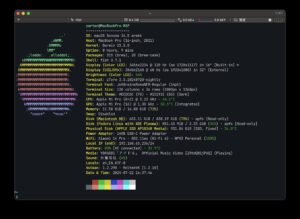Cloudflare’s 1.1.1.1 resolver, launched on April 1, 2018, has grown significantly over the years, now handling an average of 1.9 trillion queries per day from 250 locations worldwide. As a privacy-focused and high-performance DNS service, 1.1.1.1 has become a critical component of global Internet infrastructure. By analyzing this traffic, Cloudflare Radar provides unique insights into Internet activity, extending beyond simple web trends.
The Launch of the Cloudflare Radar DNS Page
Building on previous analysis of resolver data, Cloudflare has now introduced a dedicated DNS page on Cloudflare Radar. This page enhances visibility into DNS trends, covering traffic at a global, location, and Autonomous System (ASN) level. The analysis also includes protocol usage, query and response characteristics, and DNSSEC adoption.
This new feature expands on previous initiatives, including Cloudflare’s participation in the AS112 Project (since December 2022) and the launch of AS112 traffic statistics in March 2023. The goal is to offer deeper insights into DNS activity across different networks and geographical locations.
Traffic Trends and DNS Metrics
As part of Cloudflare Radar’s analytics, the new DNS page offers:
- Normalized Query Volume: Displays worldwide traffic trends and comparisons over different timeframes.
- ASN-Level Insights: Lists the top networks generating the most DNS queries in specific regions.
- Country Code Top-Level Domains (ccTLDs) Analysis: Tracks DNS query volumes for domains like .ai (Anguilla), .io (British Indian Ocean Territory), .fm (Micronesia), and .co (Colombia).
- Detection of Internet Shutdowns & Blocking: Helps identify disruptions by analyzing sudden drops in query volume, such as Venezuela’s reported blocking of 1.1.1.1 by ISPs.
Query and Response Analysis
Beyond traffic, Cloudflare’s DNS page delves into the characteristics of queries and responses:
- Transport Protocol Distribution: Tracks the adoption of UDP (86.6%), DoT (9.6%), TCP (2.0%), and DoH (1.7%) based on recent global statistics.
- Response Code Analysis: Highlights common DNS responses, including NOERROR (successful queries) and NXDOMAIN (non-existent domains).
- Cache Efficiency: Shows how frequently DNS responses are served from cache versus requiring fresh lookups.
- Time-To-Live (TTL) Distributions: Examines how long DNS records remain cached, providing insights into domain stability.
DNS Security and Adoption of DNSSEC
Cloudflare continues to emphasize privacy and security in DNS operations. The new Radar DNS insights include:
- DNSSEC Adoption Rates: Identifies whether queries originate from DNSSEC-aware clients and evaluates the percentage of domains properly signed for validation.
- End-to-End Security Metrics: Measures the fraction of DNS queries that are encrypted and protected against tampering.
Accessing and Sharing DNS Insights
Cloudflare Radar’s new DNS page is interactive, offering access to detailed insights through:
- API & Data Explorer: Users can filter and analyze DNS trends across different networks, locations, and time periods.
- Embeddable Graphs: DNS analytics can be shared on blogs, dashboards, and reports.
- Social Media Sharing: Users can tag Cloudflare Radar (@CloudflareRadar) to share insights across Twitter, Mastodon, and Bluesky.
Conclusion
DNS is a foundational component of the Internet, and Cloudflare’s Radar DNS page offers valuable transparency into its global impact. By providing in-depth analytics, security insights, and real-time monitoring, Cloudflare continues its mission to make the Internet more open, secure, and efficient. Users interested in further enhancing their Internet experience can explore Cloudflare’s 1.1.1.1 resolver and WARP app for improved security and performance.
Source: CloudFlare blog












